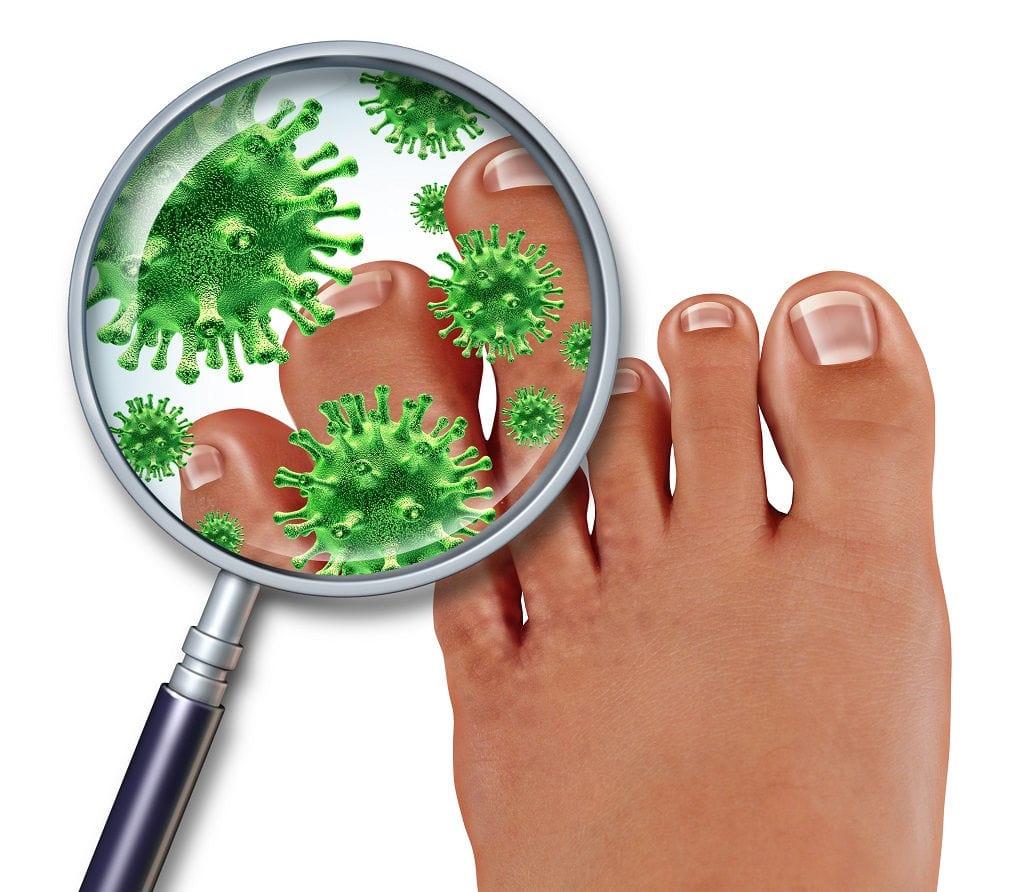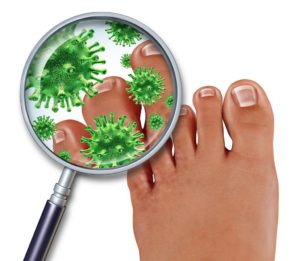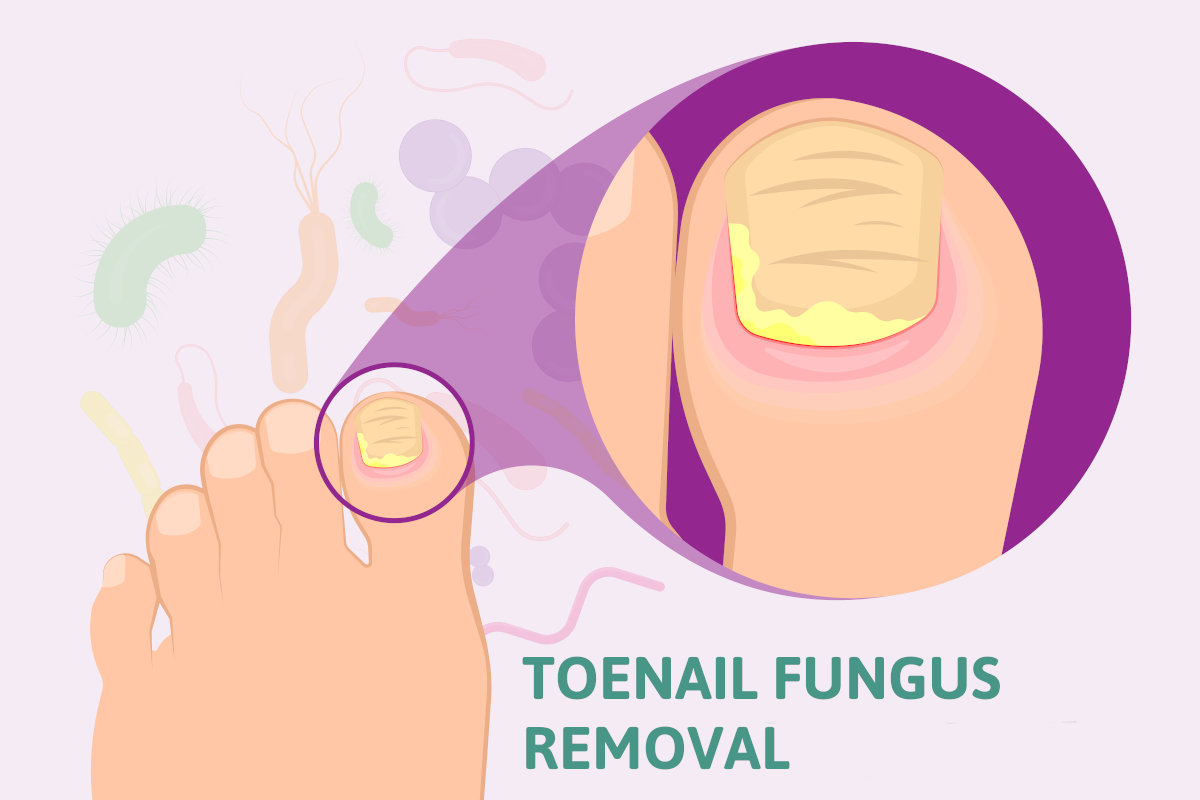
Toenail fungus is one of the most common complaints that are seen by a podiatrist. The yellow discoloration can be embarrassing to many. The nail can also become very thickened and even painful because of the thickness. It can also lead to a greater chance of a nail becoming ingrown because of how the nail becomes deformed. So how do you decide on toenail fungus removal?
Causes – fungus likes a warm dark and moist place to live. And for many this is the environment our feet are in daily. Many will feel like they get the infection from a dirty locker rooms or a nail salon. Yes, this is a possibility for the fungus to infect nails but the more we understand this problem, the more we believe it is about your immune system. Some immune systems may not be as capable of fighting a fungal infection. Antidotal evidence for this is supported by the fact that with married couples one person may get the fungal nail infection while the other bed mate never does. It’s also a common story to hear that, “my father had this when he was my age so now, I must be getting it also.” Ideally if we know of better ways to positively improve our body’s immune system improve it we may have better solutions. So, for now, there are four primary treatments I will discuss. And tell you things you may consider doing to lower your risk.
How to I know if I have toenail fungal infection?
The nails will become discolored. It’s most common to see a yellow discoloration on the nail but it may also have a white or darker appearance. Psoriasis can mimic a fungal nail appearance. This is an autoimmune disease usually accompanied by plaque formation on both legs and arms.
How is fungal nails diagnosed- For most patients the appearance of the toenails will be used to determine is fungus is the issue. Some doctors will do nail cultures, but this may not always be highly accurate.
Things to do to prevent toenail fungus
- Avoid being in shoes all day. Because this can be a dark moist place it may create a better environment for fungus to start.
- Clean your feet- It may sound too simple but when you shower, or bathe be sure to use lots of soap and water on your feet. Be sure to adequately dry them before you return to shoes and socks.
- Avoid nail polish as this can be unhealthy to the nail and make you more prone to fungal infections. There are however some nail polishes that have antifungal agents in it that may be a good replacement.
- Try over the counter topicals – If it’s early stage and not too severe products such as Lamisil may be useful. Tea tree oil is also considered as another over the counter topical option. You may also want to consider antifungal shoe spray to use in your shoes. This may help reduce any fungus you may have in your shoes.
Options that your foot specialist may offer for toenail fungal removal
- Topicals- when treating toenail fungus when it’s not severe these may be effective. The challenge with any topical is its ability to get absorbed into the nail. So, whatever is in the topical may have limited effect because of the absorption challenge. We currently use a product called tolcyleyn produced by marlinz pharma that can only be purchased exclusively through podiatry clinics. It has a patented compound that allows for better absorption, it is very common for doctors to prescribe antifungal topicals such as jublia. This may have limited effects especially in more severe cases.
- Oral antifungal medications- These are more effective than topicals but have added side effects including liver toxicity. Before this option is considered for toenail fungus removal, most doctors will order blood tests (liver panel studies) to ensure there is no current damage to the liver and follow-up with this study during treatment. The most common medication for oral use is called terbinafine Lamisil.
- Surgery- in special situations the doctor may suggest permanent removal of the affected nail. Especially in the senior population, this may be a good choice if it’s only one or two nails and the patient is not concerned about the cosmetics. Often the nail may be so damaged and thickened that that appearance is improved. This is an office procedure, and the patient can return to normal activities almost immediately. A chemical is applied to the nail bed where the nail was removed to kill the cells that make the nail preventing it from regrowing. There are no sutures or pain pills required and for most the toe is fully healed in 2-3 weeks. For many, the option to remove the nail may be a good option.
Consumer beware. Before we discuss the third treatment option I’d like to share and observe in the medical world today. Many of you frequently offer your concerns about big pharma whether it’s with concerns the Covid vaccine or treatments for covid not to mention concerns with continued marketing efforts for drugs in other arenas. It may be no different in the treatment of toenail fungus. Doctors are monetized to offer you prescriptions for oral medication or prescriptions of topicals. Again, topicals have a low success rate and although oral medication is better, you’re challenged with potential liver damage. The message for you is understand is that before we discuss what I consider the best option. You may not have heard much about it as big pharms cannot monetize doctors when it is performed. There may be a lot of influence to keep you from not considering what I consider the best option. Laser treatment.
Laser treatment – for over 16 years we have been offering laser as an option for toenail fungus removal and believe it has the highest cure rate. We use the Pinpointe laser which destroys the fungus because of the heat it generates. It pulses light into the nail very rapidly. Much like touching a stove very quickly, you don’t feel the heat during treatment. Because toenails take at least 9 months to fully grow out it takes that long to see how effective a treatment is. From our experience we have discovered everyone needs at least three treatments. Therefore, we do the first two treatments one month apart and that is followed by a third treatment three months after the second. For minor cases three treatments may be all that is needed but more severe cases may need more. Don’t get stuck searching for ‘laser toenail fungus removal near me‘ and not finding a certified and experienced podiatric practice. Our patient testimonials on youtube are from patients just like you!
Watch our patient testimonials on youtube for toenail fungus removal.
Yes, toenail fungus can be frustrating however if you get started on treatment sooner than later, you’ll increase your chances of success. Also consider laser as the best option understanding that information out there to promote medications or products to apply to your nail may be drowning out laser as the most successful option you may have. Schedule your appointment online or call our Fort Collins and Broomfield, Colorado locations to connect with a trusted foot doctor near you at our renowned foot and ankle clinic. Consider our years of experience when dealing with toenail fungus removal!
Call us today at our Fort Collins location (970) 329-8158, Broomfield location (303) 997-2795, Surgery Center (970) 329-8158, or use our online scheduling system to book your appointment.
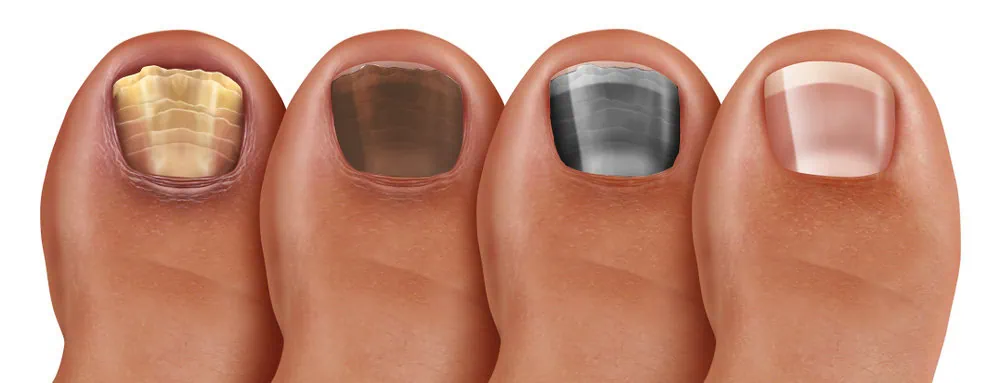
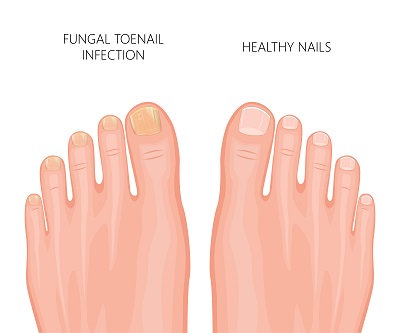
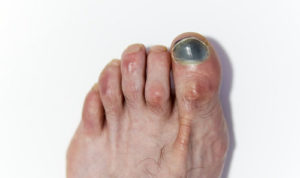
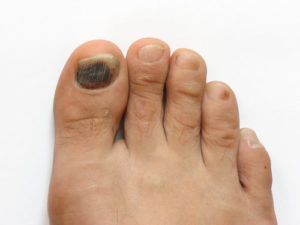 Fungus:
Fungus: 